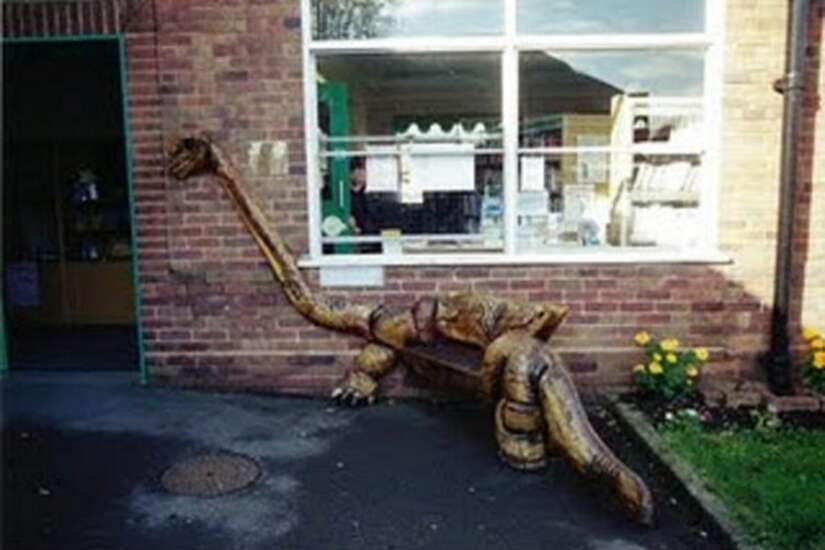When it comes to the matter of secret societies and mysterious cults, I guess many people immediately think of the Illuminati. The fact is, though, that there are more than a few secret organizations around that are hardly known and that have stayed in the shadows for a long time. We’ll begin with Loch Ness. No, not the monster itself, but a secret society somewhat tied to the tales of the Loch. In June 1969, a trio of American students – who were investigating the grounds of the old cemetery that sits next to Aleister Crowley’s Boleskine House – stumbled upon an ancient piece of tapestry that was wrapped around a conch (sea-snail) shell. It was around four feet by five feet in size and was adorned with snake-like imagery and wording in Turkish that translated to serpent. Interestingly, Turkey’s Lake Van has a longstanding monster legend attached to it. In addition, the tapestry itself displayed pictures of lotus flowers, which, according to ancient Chinese lore, were amongst the most favored foods of the legendary dragons of old. On top of that, in China lotus flowers were often left on the shores of lakes as offerings to the dragons that lurked within.
The mysterious group in question, Nessie-seeker Ted Holiday believed, was said to worship Tiamat, a terrifying Babylonian snake-goddess, or sea-dragon, who was revered as much as she was feared – and chiefly because of her murderous, homicidal ways. She mated with Abzu, the god of freshwater, to create a number of supernatural offspring, all of dragon- and serpent-like appearance. Then there were the dreaded Scorpion Men, equally hideous offspring of Tiamat that were, as their name suggests, a horrific combination of man and giant arachnids. So the legend goes, Abzu planned to secretly kill his children, but was thwarted from doing so when they rose up and slayed him instead. Likewise, Tiamat was ultimately slaughtered – by the god of storms, the four-eyed giant known as Marduk.
If, however, one knew the ways of the ancients, one could still call upon the power and essence of Tiamat – despite her death – as a means to achieve power, wealth, influence, and sex. Such rituals were definitively Faustian in nature, however (as they almost always are), and the conjurer had to take great heed when summoning the spirit-form of Tiamat, lest violent, deadly forces might be unleashed. It was highly possible, thought Ted Holiday, that the monsters seen at Loch Ness were manifestations of Tiamat, in some latter day incarnation, and specifically provoked to manifest by that aforementioned cult. Rumors still circulate to the effect that this sinister group still exists somewhere in the Highlands of Scotland. Now, let’s look at something completely different: a peacock.

In the summer of 2006, a large Crop Circle appeared in a field practically right next door to Chartley Castle, a centuries-old construction in the English county of Staffordshire. Not only that, strewn around the fringes of the Crop Circle was a not inconsiderable pile of large and colorful peacock feathers. While the presence of the peacock feathers at the site of the circle was interesting and odd, it wasn’t necessarily connected. Or, maybe it was; according to one person, at least. The Dictionary of Phrase and Fable recorded that: “The peacock’s tail is the emblem of an Evil Eye, or an ever-vigilant traitor. The tale is this: Argus was the chief Minister of Osiris, King of Egypt. When the king started on his Indian expedition, he left his queen, Isis, regent, and Argus was to be her chief adviser. Argus, with one hundred spies (called eyes), soon made himself so powerful and formidable that he shut up the queen-regent in a strong castle, and proclaimed himself king. Mercury marched against him, took him prisoner, and cut off his head; whereupon Juno metamorphosed Argus into a peacock, and set his eyes in its tale..”

And, with that information now digested, I will acquaint you with the next player in the odd saga of the Chartley Castle ape-man. Jane Adams is a devotee of Wicca who I first met in a Wiltshire Crop Circle back in August 1997. She has an intriguing theory to account for the presence of those out of place feathers. She is of the opinion that the presence of the feathers at Chartley Castle is evidence that the people she believes are guilty of making the formations in the crops use the peacock’s “Evil Eye” in what she describes as “black ceremonies.” Adams further claims that these very same ceremonies have been conducted – under the camouflage of the hours of darkness and on a whole variety of occasions – within British-based crop circles, and within ancient stone circles too.
And, she adds that those responsible were endeavoring to create “negativity” and invoke bizarre, life-threatening creatures from darkened realms that co-exist with ours, including some that would fit the image of a Bigfoot-type beast seen at Chartley Castle by a man named Mick Dodds and his wife in September 1986. As for the reason why, Adams claims the goal is to harness the beasts and then make use of them in, as she describe it, “psychic assassinations” of people who might be opposed to the activities of the group. Now, onto the island of Puerto Rico.

On my second expedition to Puerto Rico – in search of a Chupacabra or two – we had an excellent guide named Orlando. I wasn’t sure if Orlando was a full-on believer in the creature, a middle of the road skeptic or a downright debunker. It turned out, very refreshingly, that he was none of those. Instead, he had a totally open, and unbiased, approach to the controversy. Very interestingly, he took the view that the phenomenon of the Chupacabra was actually a combination of multiple phenomena. All of which had become fused into one, unholy thing: the goat-sucker. And, downright confusingly fused, too, I should stress. Orlando explained, specifically for the camera, that trying to suggest, or to theorize, that the Chupacabra was this, or was that, was completely pointless. The trick to solving the riddle was to take each case on its own merit. Some cases of animal mutilation, he said, were absolutely nothing to do with the Chupacabra, but were the work of occultists who had an agenda that involved the exploitation of the vampire stories. He told of an investigation that had been run out of the FBI’s field-office on Puerto Rico, which is situated on Carlos Chardon Avenue, in the Hato Rey region of San Juan. It was in the 1990s when Bureau agents got caught up in an investigation that revolved around nothing less than the world of voodoo.
In various parts of the island, the bodies of numerous animals were turning up dead, all bearing the classic marks of vampirism: savage attacks to the neck and a profound lack of blood. But there was something very odd about the killings. The necks of the animals had been shaved clean: where the blood had been removed, not a single hair was in sight. What were the chances that the monster had an aversion to hair and had carefully removed each and every follicle by means unknown? Zero, that’s what the chances were! It turned out that the culprits were occultists who followed a particularly dark offshoot of voodoo and who used animal blood in their rites. The marks to the necks were not bites. Shaving the hair on the relevant part of the neck simply made matters easier for the guilty parties to get the job done. To cover their tracks, however, and in the specific regions where the killings occurred, the group deliberately spread tales of the Chupacabra and its penchant for blood.
By Nick Redfern
Mysterious Universe

